
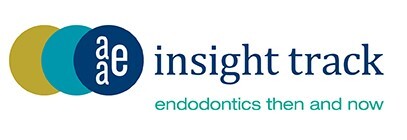
November 3-5, 2022 | Las Vegas
Insight Track: Endodontics Then and Now
Refine your search results by using the drop-down menus below, or choose “Advanced Search This List.”
-
Includes Credits
CE Hours: 1.5
Description: Root canal obturation is a critical step in non-surgical root canal treatment. In recent years, more emphasis is being placed on preserving more natural tooth structure during endodontic treatment in order to improve the long-term survival of the natural dentition. With the introduction of calcium silicate-based root canal sealers, root canal obturation techniques have evolved to adapt to this more conservative philosophy. This lecture will present an overview of the changing philosophy in root canal obturation, discuss the properties of new obturation materials, review the most current and clinically relevant evidence on various obturation materials and techniques, and describe the clinical procedure of the contemporary sealer-based obturation using calcium silicate-based sealers. The lecture will provide evidence-based clinical guidance for endodontists to meet today’s challenges in root canal obturation and achieve a more predictable treatment outcome.
Learning Objectives:
- Explain the objectives and principles of root canal obturation
- Explain the properties of calcium silicate-based root canal sealers
- Explain the rationale and the clinical techniques of sealer-based root canal obturation
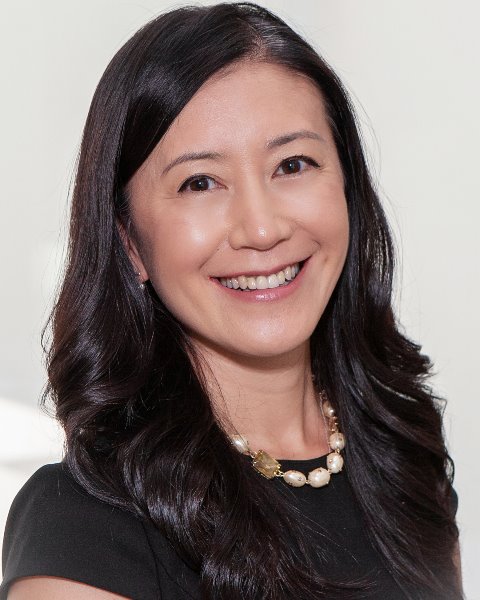
Jianing He, D.M.D., Ph.D.
Dr. Jianing (Jenny) He received her dental degree from West China University of Medical Sciences in 1996, and a certificate in Endodontics, and a PhD in Oral Biology from the University of Connecticut Health Center in 2003.
Dr. He has been actively involved in endodontic education, research, and clinical practice. She is a Diplomate of the American Board of Endodontics and a fellow of the American College of Dentists. She has published over 50 manuscripts in peer-reviewed journals and served on the Research and Scientific Affairs Committee for the AAE. Dr. He is currently an Associate Editor of the Journal of Endodontics.
Dr. He is a Clinical Associate Professor at Texas A&M University College of Dentistry and maintains a full-time private practice limited to Endodontics in Flower Mound and McKinney, TX.Speaker Disclosure
In accordance with this policy, I declare I have a past or present proprietary or relevant financial relationship or receive gifts in kind (including soft intangible remuneration), consulting position or affiliation, or other personal interest of any nature or kind in any product, service, course and/or company, or in any firm beneficially associated therewith, as indicated: Brasseler USA (Individual(s) Involved: Self): Honorarium (Terminated)
-
Product not yet rated Includes Credits
CE Hours: 2.0
Description: Root canal disinfection is still a challenge among clinicians. Many different disinfection protocols and devices are being proposed with uncertain evidence behind them. This lecture will address the main questions clinicians have and bring evidence-based answers to the most common controversies in endodontic disinfection.
Learning Objectives:
- Evaluate the characteristics of the main irrigating solutions
- Discuss the safety of endodontic devices and procedures
- Discuss clinical advantages and disadvantages of these innovations
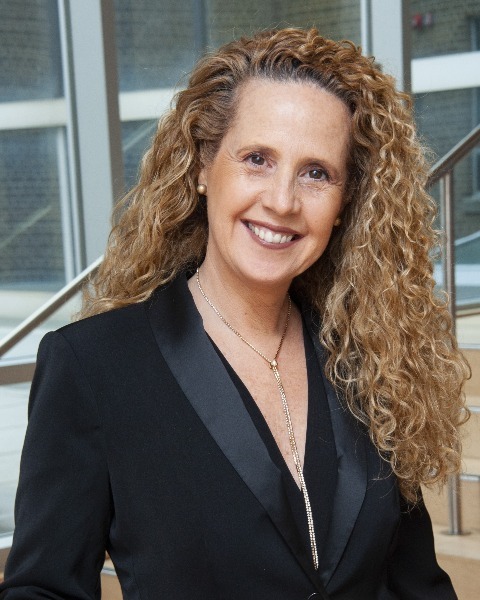
Bettina R. Basrani D.D.S., M.S.D., Ph.D.
Dr. Bettina Basrani is Tenured Associate Professor and Director, MSc Program in Endodontics at the Faculty of Dentistry, University of Toronto, Ontario, Canada since 2015. Dr Basrani received her DDS degree from the University of Buenos Aires and a Specialty Diploma in Endodontics and PhD from Maimonides University in Buenos Aires, Argentina. A long-time educator and researcher, she began her teaching career at the University of Buenos Aires. In 2000, she moved to Canada to serve as Chair of the Endodontic Program at Dalhousie University, Halifax, Nova Scotia. In 2004, she moved to Toronto, where she has continued her academic and clinical work. Internationally recognized as a leading authority in endodontics and as an excellent lecturer, effectively combining clinical and scientific information, Dr Basrani has received many awards throughout her career, such as the Louis Grossman Award by the French Society of Endodontics and has international courses and lectures, over 40 peer-reviewed scientific publications, three textbooks and several textbook chapters, and abstracts to her credit.
Speaker Disclosure
In accordance with this policy, I declare that I have NO past or present proprietary or relevant financial relationship or receive gifts in kind (including soft intangible remuneration), consulting position or affiliation, or other personal interest of any nature or kind in any product, service, course and/or company, or in any firm beneficially associated therewith.
-
Includes Credits
CE Hours: 2.0
Description: The occurrence of tooth/root fracture is a well-recognized cause of tooth loss after endodontic treatment. It has been attributed to tooth structure removal associated with traditional endodontic cavity and canal instrumentation concepts. This understanding has given rise to novel Contracted Endodontic Cavity (CEC) designs that highlight directed dentin conservation while discarding traditional principles of outline and convenience form, and to minimal canal instrumentation/shaping, both in line with the contemporary concept of minimally invasive dentistry. It has been argued that tooth structure preservation directed access and instrumentation may increase fracture resistance of teeth potentially resulting in extended long-term survival; however, it has also been argued that it may compromise canal disinfection potentially resulting in impaired periapical healing.
This lecture will describe the clinical applications of CEC and minimal canal instrumentation/shaping and review contemporary research into their possible impacts in specific tooth types. The potential benefits and risks associated with tooth structure preservation directed access and instrumentation will be debated in the context of minimally invasive endodontics, and options for clinicians to consider.
Learning Objectives:
- Describe how various contracted endodontic cavity designs differ from traditional designs
- Discuss the contemporary research on the various impacts of contracted endodontic cavity designs and minimal canal instrumentation/shaping
- Debate the benefits and risks of contracted endodontic cavities and minimal canal instrumentation/shaping, and the clinical options for clinicians
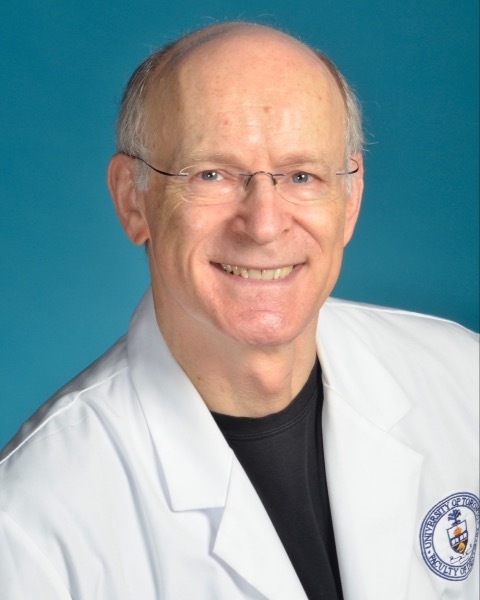
Shimon Friedman, D.M.D.
Dr. Shimon Friedman is Professor Emeritus, former Head of Endodontics and Founding Director of the M.Sc. Endodontics Program at the Faculty of Dentistry, University of Toronto, Canada. He received the D.M.D. degree (1975) and endodontics certificate (1983) from the Hebrew University in Jerusalem, Israel. He is board-certified in endodontics in Israel and had served as Chairman of the Israel Endodontic Society from 1985 to 1988. With over 250 peer-reviewed articles, textbook chapters and research abstracts, and over 330 international lectures, Dr. Friedman has acquired extensive experience in endodontic practice, research and education. He is the recipient of several awards, culminating in the AAE’s 2008 Louis I. Grossman Award, as well as the AAE's 2018 I.B. Bender Lifetime Educator Award, for outstanding contributions to endodontic science and education. Though now retired, Dr. Friedman continues following the research and lecturing extensively on endodontic treatment outcomes, management of post-treatment endodontic infection, and impacts of contracted endodontic cavity designs on nonsurgical treatment efficacy and biomechanical responses of teeth.
Speaker Disclosure
In accordance with this policy, I declare I have a past or present proprietary or relevant financial relationship or receive gifts in kind (including soft intangible remuneration), consulting position or affiliation, or other personal interest of any nature or kind in any product, service, course and/or company, or in any firm beneficially associated therewith, as indicated: Sonendo Inc.: Ownership Interest (stocks, stock options, patent or other intellectual property or other ownership interest excluding diversified mutual funds) (Ongoing), Scientific Advisory Board member (Ongoing)
-
Includes Credits
CE Hours: 2.0
Description: Regenerative endodontics represents a paradigm shift in endodontics that has the primary goal of preservation or reestablishment of homeostatic physiological pulp functions. An inflamed dental pulp has been thought to be incapable of healing. This dogma is even reflected in the diagnostic term: “irreversible pulpitis”. Also, pulp necrosis has been a condition that required root canal spaces to be filled with inert materials to prevent growth of microorganisms. Unfortunately, obturation also prevents the growth of patients own living tissues that could bring back important physiological functions lost due to partial or total pulp necrosis. Advancements in biological understanding, techniques and materials have made regenerative endodontic procedures (vital pulp therapies and revitalization) alternatives to teeth requiring non-surgical endodontic treatment. In this lecture, the application of regenerative endodontic approaches will be discussed in light of real clinical scenarios, presenting the advantages and disadvantages of these procedures and their possible pitfalls while contrasting with what is well-known in more “traditional” non-surgical endodontic therapies.
Learning Objectives:
- Identify the prognostic factors for pulp revitalization and pulpotomies
- Understand the expected outcomes of pulp revitalization and vital pulp therapies
- List the most common pitfalls with revitalization and pulpotomies and how to avoid them
Anibal R. Diogenes, D.D.S., M.S., Ph.D.
Dr. Anibal Diogenes received his D.D.S. from UFPE in Brazil, his M.S. in Molecular Biology from the University of Nebraska, and his Ph.D. in Pharmacology and Certificate in Endodontics from the University of Texas Health Science Center at San Antonio. Dr. Diogenes is the Vice-Chair of the department of Endodontics at the University of Texas Health at San Antonio, and a director of the American Board of Endodontics. His areas of research include, inflammation, pain and regenerative endodontics.
Speaker Disclosure
I declare that I have no proprietary, financial, or other personal interest of any nature or kind in any product, service, course, and/or company, or in any firm beneficially associated therewith, that will be discussed or considered during the proposed presentation
-
Includes Credits
CE Hours: 1.75
Description: The common conception of advanced imaging allows earlier detection, diagnosis and intervention leading to better outcomes is widely accepted. We have a long, wide and deep evidential base on the topic of "detecting smaller lesions" with projection radiography and advanced imaging, but this is only half of the decision-making process. Resorptions provide us with a counter-intuitive window into the issues surrounding advanced imaging, and our ever increasing ability to detect smaller and smaller findings. This extends to periapical and other findings, as well as advanced imaging in medicine and other testing issues. Counterintuitively, advanced imaging often allows less treatment. In this presentation, we will introduce a classification system for identifying resorptive and other findings, broaden the scope of treatment planning and treatment based on the routine incorporation of advanced imaging in the endodontic practice.
Learning Objectives:
- Define the distinctions between the types of findings with advanced imaging
- Incorporate these distinctions in imaging findings into decision-making treatment planning
- Describe these findings in neutral, non action-grounded language to patients
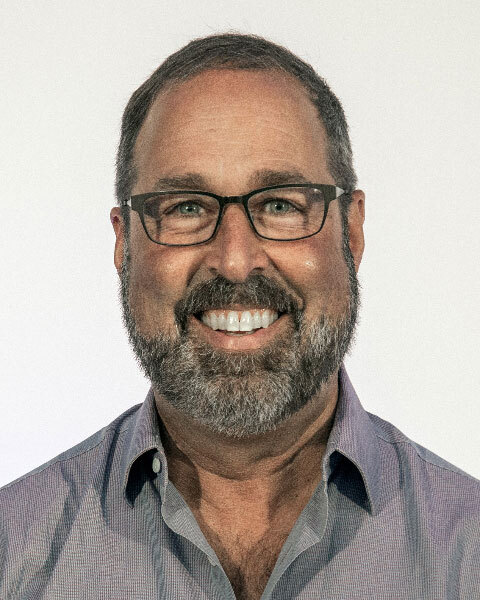
John A. Khademi, D.D.S., M.S.
Dr. Khademi received his DDS from the University of California San Francisco and his certificate in endodontics and did his MS on digital imaging from the University of Iowa. He is in full time private practice in Durango, Colorado and was Associate Clinical Professor in the Dept. of Maxillofacial Imaging at USC as well as being Adjunct Assistant Professor at SLU. In his “prior life”, he wrote software for laboratory automation, instrument control and digital imaging. He lectures internationally about CBCT, clinical trial design, outcomes, and conventional endodontic technique. As a Radiological Society of North America (RSNA) member for over 25 years, his background in medical radiology allows him a perspective shared by very few dental professionals. He has contributed to many sections and chapters in textbooks and is the lead author for Quintessence’s Advanced CBCT for Endodontics: Technical Considerations, Perception, and Decision-Making.
Speaker Disclosure:
In accordance with this policy, I declare I have a past or present proprietary or relevant financial relationship or receive gifts in kind (including soft intangible remuneration), consulting position or affiliation, or other personal interest of any nature or kind in any product, service, course and/or company, or in any firm beneficially associated therewith, as indicated: Carestream Dental: Consultant (Ongoing)|Carestream Dental: Honorarium (Ongoing)|Sonendo: Consultant and Scientific Advisory Board (Ongoing)|Sonendo: Grant/Research Support (Ongoing)|Sonendo: Honorarium (Ongoing)|Sonendo: Ownership Interest (stocks, stock options, patent or other intellectual property or other ownership interest excluding diversified mutual funds) (Ongoing)|SS White: Consultant (Ongoing)|SS White: Honorarium (Ongoing)
-
Includes Credits
CE Hours: .75
Description: According to Pew Research, seven in ten Americans used social medial in 2021 to connect, share information, engage in news content and entertain themselves. As a result, there is great pressure to create an online brand identity and build a loyal following. However, there is more to social media than developing your digital reputation. This presentation aims to broaden your understanding of the scope of social media in dentistry, including endodontics. The presentation will explore the role and impact of influencer marketing; the role of social media in dental education (aka it's impact on your future referral base); and provide insight into social media as a tool for public health surveillance. Further, the presentation will explore the concepts of "endo dysmorphia" and "Key Opinion Leader".
Learning Objectives:
- Describe the scope of social media's impact on dentistry, including endodontics
- Describe both the positive and negative impacts of social media on endodontics
- Describe evolution of social media and it's implications for endodontic practice
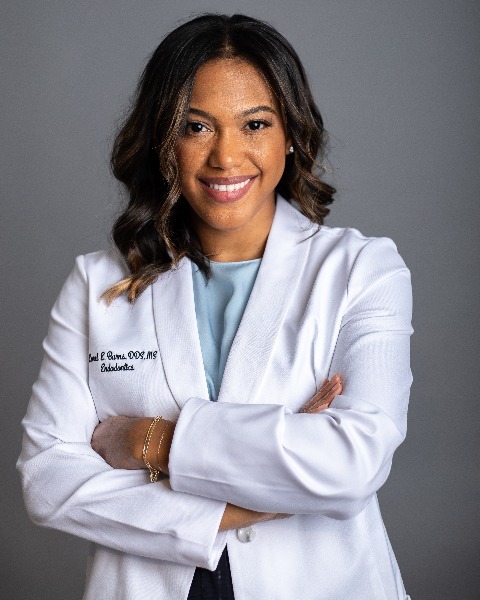
Lorel E. Burns, D.D.S.
Dr. Lorel Burns is a clinician-investigator and assistant professor at New York University (NYU) College of Dentistry. She is a Diplomate of the American Board of Endodontics. Dr. Burns earned her DDS degree at NYU College of Dentistry, completed her specialty training in Endodontics at the University of Pennsylvania School of Dental Medicine and was awarded her master’s degree in Clinical Investigation by NYU School of Medicine. In 2019, she was selected as the American Association of Endodontists (AAE) Foundation’s Endodontic Educator Fellow. In 2022, she recognized with the American Dental Education Association (ADEA) Junior Faculty Award. Dr. Burns’ research interests include endodontic treatment outcomes, access to dental care, clinician decision-making, and dental education. Her research has been funded by the National
Institutes of Health (NIH)/ National Institute of Dental and Craniofacial Research (NIDCR), the Robert Wood Johnson Foundation (RWJF), and the American Dental Education Association, ADEAGies Foundation. Her work has been published in peer- reviewed journals including the Journal of Endodontics (JOE), the International Endodontic Journal (IEJ), the Journal of the American Dental Association (JADA), and the Journal of Dental Education (JDE). Dr. Burns maintains part-time private practice limited to Endodontics in New York, USA.Speaker Disclosure:
I declare that I have no proprietary, financial, or other personal interest of any nature or kind in any product, service, course, and/or company, or in any firm beneficially associated therewith, that will be discussed or considered during the proposed presentation.
-
Includes Credits
CE Hours: 1.0
Description: Bone health and maintenance of bone integrity are important concerns during comprehensive cancer care and management of osteoporosis. Bisphosphonates and denosumab are antiresorptive medications widely used for the prevention and treatment of osteoporosis and skeletal complications associated with metastatic cancer and multiple myeloma. Medication-related osteonecrosis of the jaw (MRONJ) related to antiresorptive therapy is a condition that has created numerous dilemmas in patient management and may have a broad health impact. This case-based presentation will review evidence-based data that has led to paradigm shifts for pathogenesis and innovative strategies for risk assessment, prevention and management of MRONJ.
Learning Objectives:
- Describe evidence-based data for risk assessment, diagnosis, and preventive strategies for patients at risk for MRONJ
- Demonstrate endodontic management strategies for patients at risk for MRONJ
- List management options for patients with MRONJ
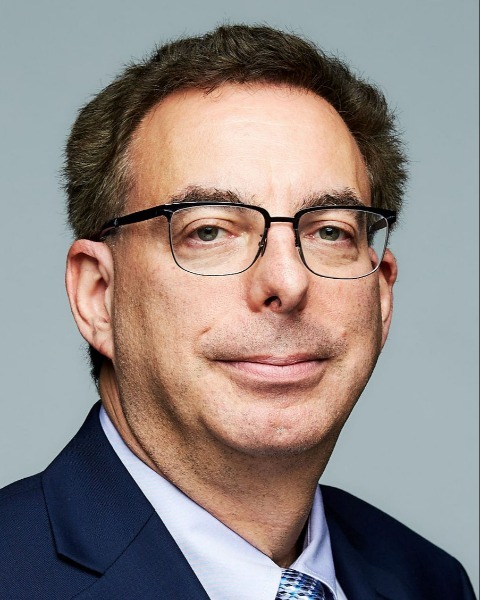
Kenneth Fleisher, D.D.S., F.A.C.S.
Dr. Kenneth Fleisher, DDS, FACS is a board certified oral and maxillofacial surgeon, a clinical professor in the department of oral and maxillofacial surgery at the NYU Dentistry, Associate Director of the postgraduate surgery training program and an attending surgeon Bellevue Hospital Center and New York University Langone Medical Center in Plastic Surgery.
Dr. Fleisher is recognized by NYU for his clinical expertise in managing patients undergoing antiresorptive therapy and who have developed medication-related osteonecrosis of the jaw. Dr. Fleisher has published numerous chapters and papers in peer-reviewed journals, lectures nationally and internationally for dental, medical and surgical organizations and he is currently the principal investigator of an interdisciplinary translational research protocol that explores the pathogenesis of osteonecrosis of the jaw.
Speaker Disclosure
I declare that I have no proprietary, financial, or other personal interest of any nature or kind in any product, service, course, and/or company, or in any firm beneficially associated therewith, that will be discussed or considered during the proposed presentation.
Disclosure
All speakers must disclose to the program audience any proprietary, financial or other personal interest of any nature of kind, in any product, service, source and/or company, or in any firm beneficially associated therewith that will be discussed or considered during their presentation. The AAE does not view the existence of these interests or uses as implying bias or decreasing the value to participants. The AAE, along with ADA CERP, feels that this disclosure is important for the participants to form their own judgment about each presentation. Please see each individual speaker's information within a session for disclosure information.
Speakers can select which components of their presentation they would like included on Endo On Demand, and as a result, some courses may only include a handout, audio, audio and handout, or have portions of their presentation omitted. Courses that have only a handout and/or audio do not include the online CE option. Courses with multiple speakers may have some portions omitted from the presentation if not all speakers give permission to have their content posted.
| Access Date | Quiz Result | Score | Actions |
|---|

